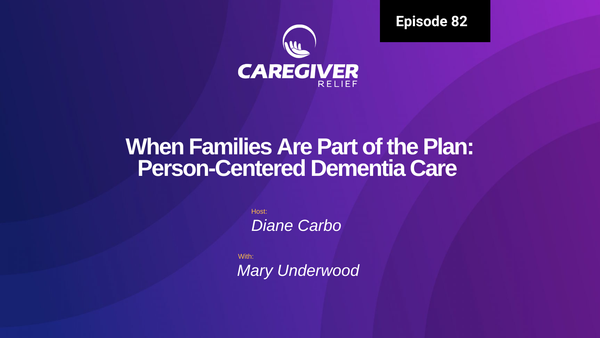Does Medicaid Cover Hospice?

Are you looking for information about Medicaid and hospice care? This guide will provide an overview of what Medicaid is, how it covers hospice care, and other important considerations related to receiving Medicaid coverage for this type of care.
Medicaid is a federal and state funded health insurance program that provides coverage for low income individuals and families. It is especially beneficial for those who do not have access to private health insurance. To be eligibile for Medicaid, people must meet certain income and asset requirements.
Hospice care is a type of specialized care provided to people with terminal illnesses. It is focused on pain and symptom management, as well as providing emotional and spiritual support. It is often covered by Medicare, but some people may not be eligible for Medicare or have trouble paying for the associated out-of-pocket costs. Medicaid can sometimes help to cover these costs.
In this guide, we will cover:
- What is Medicaid and how does it work?
- How is hospice care defined?
- What is covered by Medicaid for hospice care?
- What assistance programs and benefits are available for those receiving hospice care?
- What are the eligibility requirements for Medicaid?
- How to apply for Medicaid coverage?
- What are the payment options for those receiving Medicaid coverage for hospice care?
- Frequently asked questions (FAQs) about Medicaid and hospice care
- Tips for maximizing Medicaid coverage for hospice care
By reading this guide, you will gain a better understanding of the relationship between Medicaid and hospice care. You will learn about the eligibility requirements, payment options, and other factors that can help you make the most of your coverage. Let's get started!
Understanding Medicaid Coverage
Medicaid is a government-funded health insurance program for low-income individuals and families. It is managed at the state level, and eligibility requirements may vary from state to state. In general, Medicaid coverage includes health services for medical and mental health care, long-term care, and assistance with everyday activities.
Medicaid coverage is divided into two major categories: mandatory benefits and optional benefits. Mandatory benefits cover basic healthcare services for children and adults, including primary and preventive care, hospital services, and prescription drugs. Optional benefits may include dental care, vision care, home health care, and other services not considered medically necessary.
Medicaid coverage for hospice care is one of the optional benefits that may be available in some states. Hospice care includes medical services and support for people at the end of life, including pain and symptom management, emotional and spiritual support, and other services.
In order to receive Medicaid coverage for hospice care, the individual's doctor or healthcare provider must determine that they meet the criteria for hospice care. If approved, Medicaid will cover the cost of the hospice services. This can provide much-needed financial relief for those who already face high medical expenses.
Definition of Hospice Care
Hospice care is a type of end-of-life care that provides comfort, support, and medical care to individuals with a life-limiting illness. Hospice care focuses on relieving suffering while providing emotional and spiritual support to the patient and their family. It also encompasses a range of treatments such as pain management, symptom relief, and counseling.
Hospice care often includes services such as nursing care, social work, personal care, counseling, and spiritual guidance. It can also involve hospice aides and volunteers to provide additional support and assistance. Additionally, some hospice centers may offer complementary therapies such as massage, reflexology, music therapy, and aromatherapy.
Hospice care also includes palliative care, which is focused on reducing the symptoms and stress associated with a serious illness. Palliative care may involve symptom management, counseling, and support services for both the patient and their loved ones.
What is Covered Under Medicaid?
When it comes to hospice care, Medicaid covers a wide range of services that can be an asset in quality end-of-life care. These services can include medications, medical supplies and equipment, nursing services, medical transportation, and more. The cost of these services will depend on the individual’s condition and other factors, such as income and available resources.
For instance, a person may be eligible for Medicaid coverage for nursing services that enable them to remain in their home, receive treatment from a specialist, receive physical therapy, or be admitted to a hospice facility. These services will be determined by a doctor or healthcare provider and approved by Medicaid.
In addition to the specific services approved by Medicaid, some additional types of support services may be covered as well. These services may include help with personal care, meal planning, and assistance with activities of daily living. It is important to note that the services provided through Medicaid may vary from state to state, so it is important to research your state's policies.
Assistance Programs and Benefits
When it comes to hospice care, there are a variety of programs and benefits available that can help cover some or all of the costs. Medicaid is just one of the options available, and other assistance programs may be able to offer additional support.
Some of these programs are offered through the federal government and may provide payment directly to the hospice provider. Others may offer discounts on services, or provide financial aid for other medical services such as prescriptions and medical equipment.
State and local governments may also offer assistance programs specifically designed to assist those in need with hospice care. These programs may provide access to healthcare professionals, provide payment for services, or subsidize the cost of care.
For those who qualify, Medicare may also provide coverage for hospice care. Medicare may pay for some hospice services, depending on the individual’s diagnosis and the type of services needed. However, it is important to note that Medicare does not cover all costs associated with hospice care.
It is important to explore all of the options available for assistance when it comes to hospice care. Doing so can help to reduce the financial burden associated with this type of care, and make it more accessible to those who need it.
Eligibility Requirements for Medicaid
Medicaid is a government-funded health insurance program. It provides coverage for those who qualify, which may include people who fall into certain low-income brackets, have disabilities, are elderly, or have certain medical conditions. To be eligible for Medicaid coverage, an individual must meet certain conditions related to their assets and income.
Income is generally the biggest factor in determining Medicaid eligibility. The amount of income one can earn and still qualify for Medicaid varies by state and by the individual’s family size. Generally, individuals must make less than 133% of the Federal Poverty Level in order to qualify for benefits. They must also have limited assets, such as cash, cars, real estate, or investments, in order to qualify.
Individuals must also meet other requirements to receive Medicaid. They may need to provide proof of U.S. citizenship or legal residency, and they must not already have access to employer-sponsored health insurance. Furthermore, each state has its own set of eligibility criteria for Medicaid, so it is important to check with your state’s Medicaid office to ensure that you meet all necessary requirements.
How to Apply for Medicaid
Applying for Medicaid can seem overwhelming, but it doesn't have to be. With the right information and guidance, anyone can easily apply for Medicaid coverage. Taking the time to review the eligibility requirements and understanding how the application process works will make the process much smoother and ensure that you get the coverage you need.
Here is a step-by-step guide on how to apply for Medicaid coverage for hospice care:
- Gather all the necessary documents and information you will need to fill out the application. This includes income and asset statements, recent tax returns, and proof of identity.
- Find the nearest Medicaid office in your area and make an appointment with a caseworker.
- At the appointment, you will need to provide the caseworker with the documents and information you gathered. The caseworker will then assess your eligibility by comparing your income and assets to the current thresholds for Medicaid coverage.
- If you are found eligible for Medicaid, you will be asked to submit any additional information or documents needed to complete your application.
- Once your application is approved, you will need to choose a healthcare provider from the Medicaid network or managed care plan.
- Your healthcare provider can then help you get the hospice care you need.
It is important to note that the eligibility requirements for Medicaid differ from state to state. Make sure to thoroughly research the specific requirements in your state before applying.
Options for Payment
When you are receiving hospice care through Medicaid, the payment for services typically comes from a combination of sources. The main source is Medicaid, which covers the majority of the costs associated with hospice care. Depending on the state in which you live, there may also be other sources of funding such as supplemental programs, private insurance, or out-of-pocket payments.
Medicaid does not necessarily cover all of the costs associated with hospice care, so it is important to understand what services are covered. Generally speaking, Medicaid will cover medical services, prescription drugs, and durable medical equipment related to hospice care. In some states, Medicaid may also cover non-medical services, such as counseling and spiritual support, for those who qualify.
In addition to Medicaid, there may be other sources of payment available for those who need hospice care. Supplemental programs or private insurance may cover some of the services that are not covered by Medicaid. It is important to check with your insurance provider to determine what services are covered and if there are any restrictions. You may also be able to pay out-of-pocket for some of the services that are not covered by insurance.
It is important to understand how payment for hospice care works so that you can get the most out of your coverage. If you have any questions about the payment options for Medicaid coverage for hospice care, your healthcare provider or insurer should be able to provide more information.
FAQs
When it comes to receiving Medicaid coverage for hospice care, there are plenty of questions that may arise. Below are some of the most commonly asked questions about Medicaid coverage for hospice.
- What type of services are typically covered by Medicaid for hospice care? Depending on a person's individual situation, Medicaid may cover a range of services related to hospice care, including hospital stays, medical equipment, doctor's visits, medications, home health care, and other medical services.
- How is hospice care funded if someone does not have Medicaid? If someone does not qualify for Medicaid, there are several other options for funding hospice care, such as private insurance, long-term care insurance, or other state and federal programs.
- What other resources are available for people seeking more information about Medicaid coverage for hospice? The Centers for Medicare and Medicaid Services website is a great resource for detailed information on Medicaid coverage. Additionally, national and local hospice organizations can provide useful information on the types of services covered and how to apply for Medicaid.
Tips for Maximizing Medicaid Coverage for Hospice Care
For those who are eligible for Medicaid coverage for hospice care, there are several tips and best practices you can follow to get the most out of your coverage. Here are the top tips for maximizing your Medicaid coverage:
- Understand what is covered under your Medicaid plan - Knowing exactly what is covered by your Medicaid plan will help you make informed decisions about hospice care.
- Contact a healthcare provider or facility that accepts Medicaid - Make sure you find a healthcare provider or facility that accepts Medicaid and offers the services and care you need.
- Keep all paperwork and documentation up to date - Staying on top of paperwork and documentation related to your treatment and care can help ensure that your Medicaid coverage remains valid.
- Ask for help if needed - Don’t be afraid to ask for help understanding the application process or if you have any questions about your coverage.
- Understand other options for payment - If you do not qualify for Medicaid coverage, there may be other forms of payment available such as grants, charities, or private insurance.
Following these tips can help ensure that you are getting the most out of your Medicaid coverage for hospice care.
The key takeaway from this guide is that Medicaid can cover hospice care services for those who qualify. Medicaid offers a wide range of assistance programs and benefits that can help to cover the costs associated with hospice care. Understanding the eligibility requirements and how to apply for Medicaid coverage is essential in order to maximize the benefits of the coverage.
It is important to note that the exact services covered by Medicaid for hospice care will depend on the individual's circumstances and diagnosis, as well as the medical team's recommendation. It is best to speak to your doctor or a healthcare provider about all available options so that you can make an informed decision about the best course of action.
If you or someone you know is looking into receiving hospice care, there are several resources and options available. Consider speaking to a doctor about the available coverage and options for payment. It is also important to review the Medicaid guidelines for hospice care in order to ensure that you are eligible and that all necessary documentation is in order.
Finally, it is wise to look into other forms of financial assistance and benefits that may be available to you or a loved one. There are many organizations and programs that provide support for those in need.
This guide has provided an overview of the key concepts surrounding Medicaid and hospice care. You should now have a better understanding of what services are covered by Medicaid and what assistance is available. Use this information to make the most informed decision for yourself or a loved one. If you still have questions or need more information, please consult with a healthcare professional.
You might also like this article:







